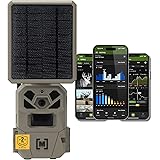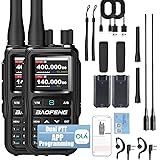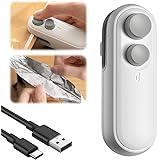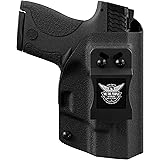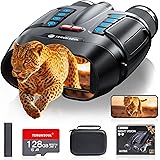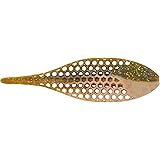The intricate art of assembling a robust wilderness primary care kit for expeditions is rarely a static endeavor. As the accompanying video expertly demonstrates, no single “one-size-fits-all” solution exists in the dynamic realm of remote medical support. Instead, a meticulously tailored approach is paramount. An effective expedition medical kit functions as a bespoke arsenal, its components carefully selected to counter the specific threats posed by a given environment, planned activities, and the unique health profile of the expedition team.
This detailed walkthrough provides a foundational glimpse into a comprehensive medical cache designed for a challenging tropical environment, supporting a reality TV production. Consequently, its design prioritizes robustness and accessibility over minimal weight, accounting for vehicle-based transport and extensive water operations. The following exploration delves deeper into the strategic considerations and specific components vital for optimizing such a critical piece of expedition medical kit.
Strategic Customization: Pillars of a Remote Medical Kit
Crafting an effective remote medical kit begins with a rigorous risk assessment. This process identifies potential hazards and medical exigencies. Moreover, it dictates the scope and depth of medical supplies required. The environment, for instance, dramatically influences specific needs. A tropical setting, as highlighted in the video, necessitates robust anti-fungal treatments and ample rehydration solutions. Conversely, an Arctic expedition would prioritize hypothermia management and specialized wound care for frostbite. Therefore, understanding the operational context is non-negotiable for medical kit customization.
Furthermore, planned activities play a pivotal role in kit configuration. High-altitude mountaineering demands medications for acute mountain sickness, while whitewater rafting mandates extensive waterproof packaging. The group’s demographic composition also dictates contents; children require different dosages and specific pediatric formulations. Individuals with pre-existing conditions, such as diabetes or severe allergies, necessitate specialized provisions. Consequently, the medical professional responsible for the kit acts as a medical architect, designing a system perfectly aligned with potential challenges.
Wound Care: Building a Resilient Barrier
Effective wound management remains a cornerstone of wilderness primary care kit preparedness. From minor abrasions to complex lacerations, prompt and appropriate intervention minimizes infection risk and promotes healing. The video showcases essential items like Hypafix and various taping solutions. These are crucial for securing dressings and providing light support, much like scaffolding for a healing structure. Cohesive bandages, moreover, offer versatile compression for sprains and strains, providing stabilization without restricting circulation excessively.
Irrigation and wound cleaning are foundational steps. While clean water suffices for initial rinsing, specialized solutions like povidone-iodine and hydrogen peroxide are invaluable. Hydrogen peroxide, specifically mentioned for reef cuts, demonstrates its efficacy in debriding contaminated wounds. Beyond this, a selection of non-sterile gauze facilitates thorough cleaning and fluid absorption. Various dressings, ranging from humble Band-Aids to larger Primapore adhesive dressings, form the outer layer of defense. More advanced dressings like Jelonet and Melenolin, impregnated with paraffin or low-adherent materials, are crucial for burns and fragile skin, preventing adherence and promoting moist wound healing. Steri-Strips offer a non-invasive option for closing superficial wounds, reducing scarring and infection risk.
Advanced Interventions: Bridging the Gap in Austere Environments
The capacity for advanced medical interventions elevates an expedition medical kit beyond basic first aid. Intravenous (IV) access, for example, is a lifeline in cases of severe dehydration, systemic infection, or the need for rapid drug delivery. The cannulation kit, complete with tourniquet, cannula, Tegaderm, and gauze, represents a vital capability. Securing IV access in the field can be challenging, demanding proficiency and a sterile technique akin to a surgeon’s precision in a makeshift operating theatre.
Suturing, another critical skill, allows for definitive closure of appropriate lacerations, minimizing infection and improving cosmetic outcomes. Lignocaine vials provide local anesthesia, ensuring patient comfort during the procedure. A range of suture materials and a dedicated suture pack enable the medical professional to address various wound types. Furthermore, the kit includes key emergency trauma supplies. Hemostatic dressings, such as those shown, are indispensable for controlling severe hemorrhage, acting as an internal dam. A triangular bandage offers multi-purpose support for slings or splinting. The SAM splint, a highly versatile piece of equipment, can immobilize almost any fractured limb. A foil blanket prevents hypothermia, a silent killer in many trauma scenarios, conserving body heat like an insulating cocoon.
Pharmaceutical Arsenal: A Carefully Curated Spectrum
The pharmaceutical section of a wilderness primary care kit is perhaps its most complex and critical component. Selecting an array of drugs involves balancing broad-spectrum efficacy with specific environmental needs. Diarrhea, as noted in the video, is a prevalent issue in tropical environments. Therefore, a comprehensive selection of laxatives (Metamucil, Bisacodyl, microlax enema) and anti-diarrheals (Loperamide) is essential for managing gastrointestinal distress, maintaining group morale and functionality.
Antibiotics form a crucial defense against infection. The kit includes Doxycycline, often used for malaria prophylaxis and various bacterial infections. Amoxicillin targets respiratory infections, while Flucloxacillin is effective against skin and soft tissue infections, which are common with minor injuries in humid climates. Azithromycin is a potent choice for bacterial dysentery, and Nitrofurantoin addresses urinary tract infections. Chloramphenicol and Cipros are included for eye infections, while the prevalence of fungal infections in the tropics necessitates antifungals like Miconazole cream and foot powder. Furthermore, the video highlights a selection of analgesics, from simple oral options like Ibuprofen and Paracetamol to stronger preparations like Co-codamol (Panadeine Forte) and the potent Methoxyflurane (Penthrox) for severe pain, allowing for a tiered approach to pain management.
Essential Emergency Medications & Diagnostics
Beyond routine pharmaceuticals, an expedition medical kit must contain immediate-acting emergency medications. Oral glucose gel provides rapid treatment for hypoglycemia, a critical intervention for diabetic emergencies. A Ventolin inhaler addresses acute bronchospasm, vital for asthmatics or individuals experiencing allergic reactions. GTN spray is essential for managing angina and suspected cardiac events. Aspirin, when administered quickly, can be life-saving in cases of suspected myocardial infarction. Adrenaline, stored efficiently in vial form, is an absolute necessity for treating anaphylaxis, a severe, potentially fatal allergic reaction, acting as an immediate systemic countermeasure.
Accurate diagnosis in the field is as important as treatment. The diagnostic tools in the kit are akin to a doctor’s extended senses. A stethoscope and BP cuff facilitate vital sign assessment, providing crucial data on cardiovascular function. A thermometer detects fever or hypothermia. An otoscope and ophthalmoscope enable examination of the ears and eyes, respectively, for infections or foreign bodies. A pulse oximeter (Sat probe) measures oxygen saturation, critical for respiratory assessment. Urine dipsticks can quickly screen for infections, dehydration, or metabolic issues. A glucometer, similarly, offers rapid blood glucose monitoring. For eye emergencies, Tetracaine provides topical anesthesia, and Fluorescein dye, used with cotton buds to evert the eyelid, helps identify corneal abrasions or foreign bodies, transforming invisible damage into discernible patterns.
Logistical Ingenuity & Operational Excellence
The physical housing of a wilderness primary care kit is as important as its contents. The use of a sealed Pelican case, as demonstrated, epitomizes durability and environmental protection. Its waterproof and robust construction safeguards delicate medicines and instruments from the elements, a critical consideration when operating in wet or harsh terrains. This serves as an impenetrable vault for medical assets. While the presenter expresses a preference for a more modular system, the consolidated, space-efficient design showcased offers distinct advantages for specific transport scenarios, such as vehicle-based operations.
Moreover, auxiliary tools and organizational systems are indispensable for operational excellence. Scissors are universally useful for cutting dressings and clothing. A Sharpie facilitates clear documentation and drug labeling, preventing critical errors in dispensing. Small bags allow for organized drug distribution, enhancing patient compliance and tracking. A compact sharps box safely contains used needles and other biohazards, upholding critical safety and waste management protocols. This comprehensive approach ensures that the expedition medical kit is not merely a collection of items, but a highly functional, well-organized system ready for any contingency in austere environments.
Expedition Ready: Your Wilderness Medical Kit Q&A
What is a wilderness primary care kit?
A wilderness primary care kit is a specialized medical kit designed for expeditions in remote environments. It contains a comprehensive range of supplies to provide primary medical care when professional help is not readily available.
Why is it important to customize a medical kit for a wilderness expedition?
It’s crucial to customize the kit because there’s no ‘one-size-fits-all’ solution. The specific contents need to be tailored to the environment, planned activities, and the unique health needs of the expedition team.
What are some main categories of supplies found in a wilderness primary care kit?
These kits typically include extensive wound care supplies, a variety of medications for common illnesses and emergencies, diagnostic tools, and sometimes equipment for advanced medical interventions like IVs or suturing.
How are these specialized medical kits kept safe and protected during an expedition?
Expedition medical kits are often housed in durable, waterproof containers, like sealed Pelican cases. This protects the delicate medicines and instruments from harsh weather, water, and rough terrain.



